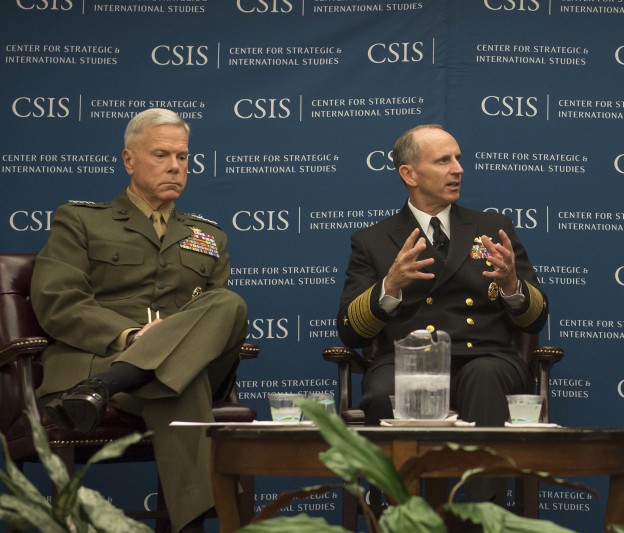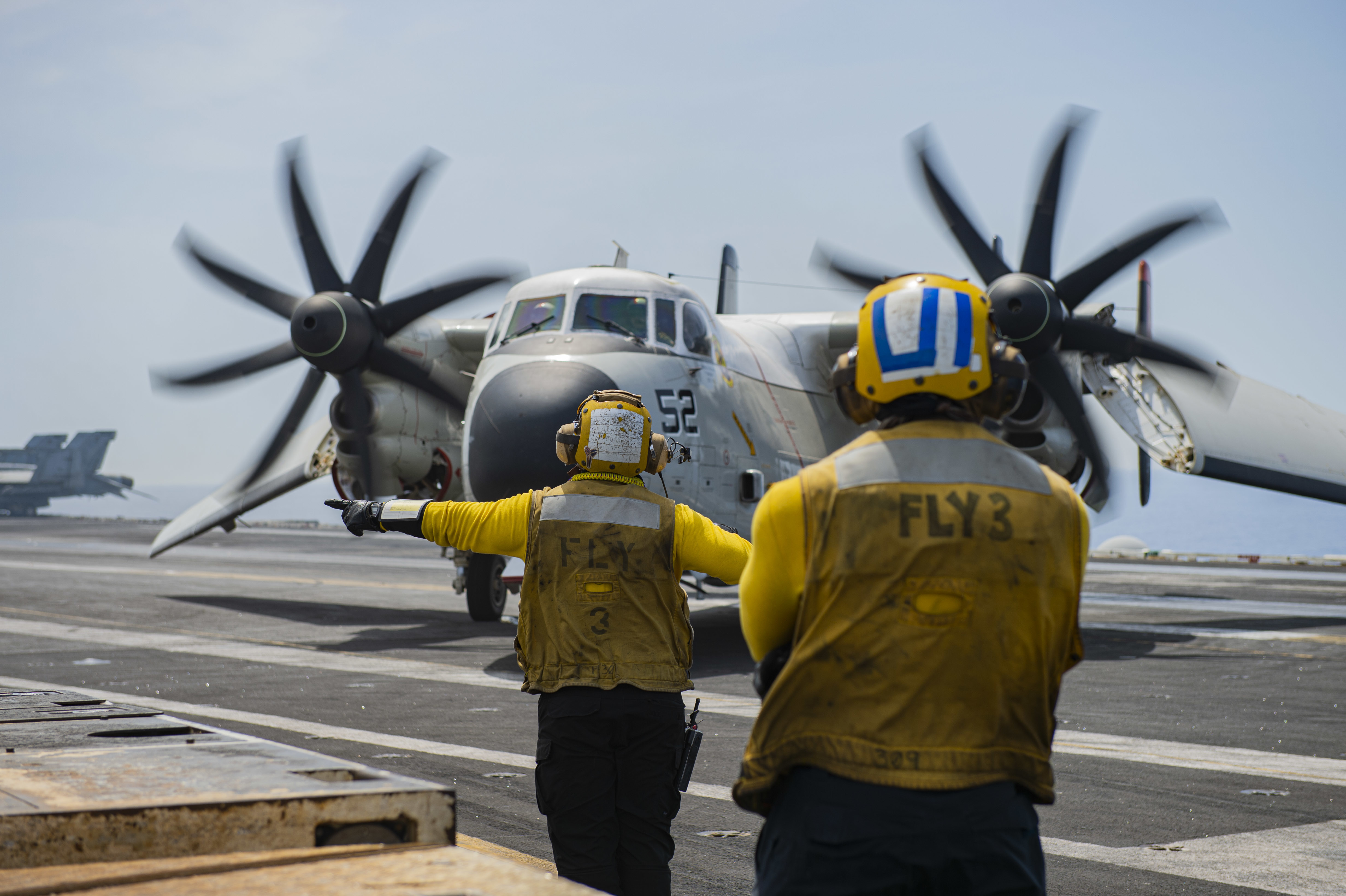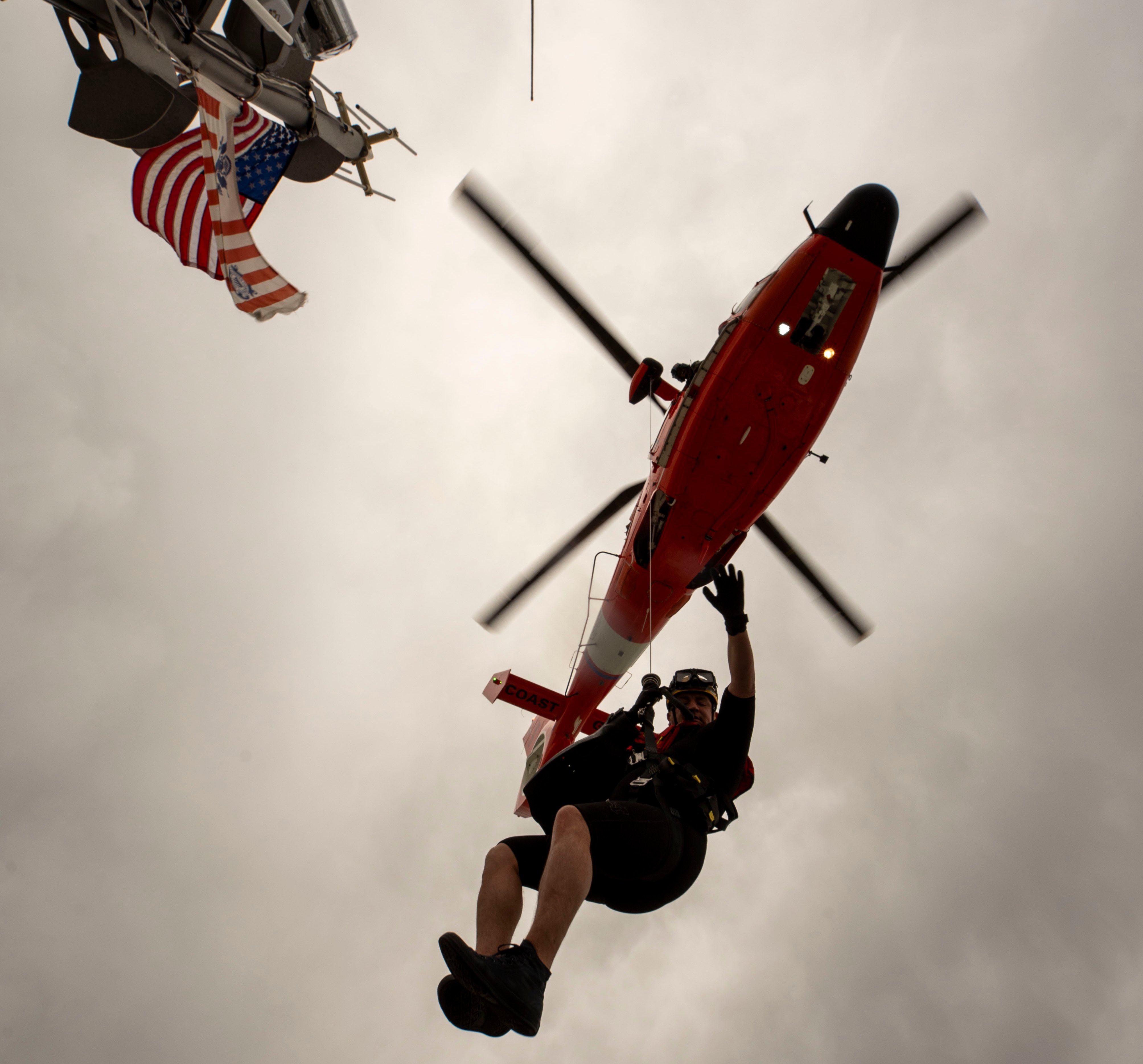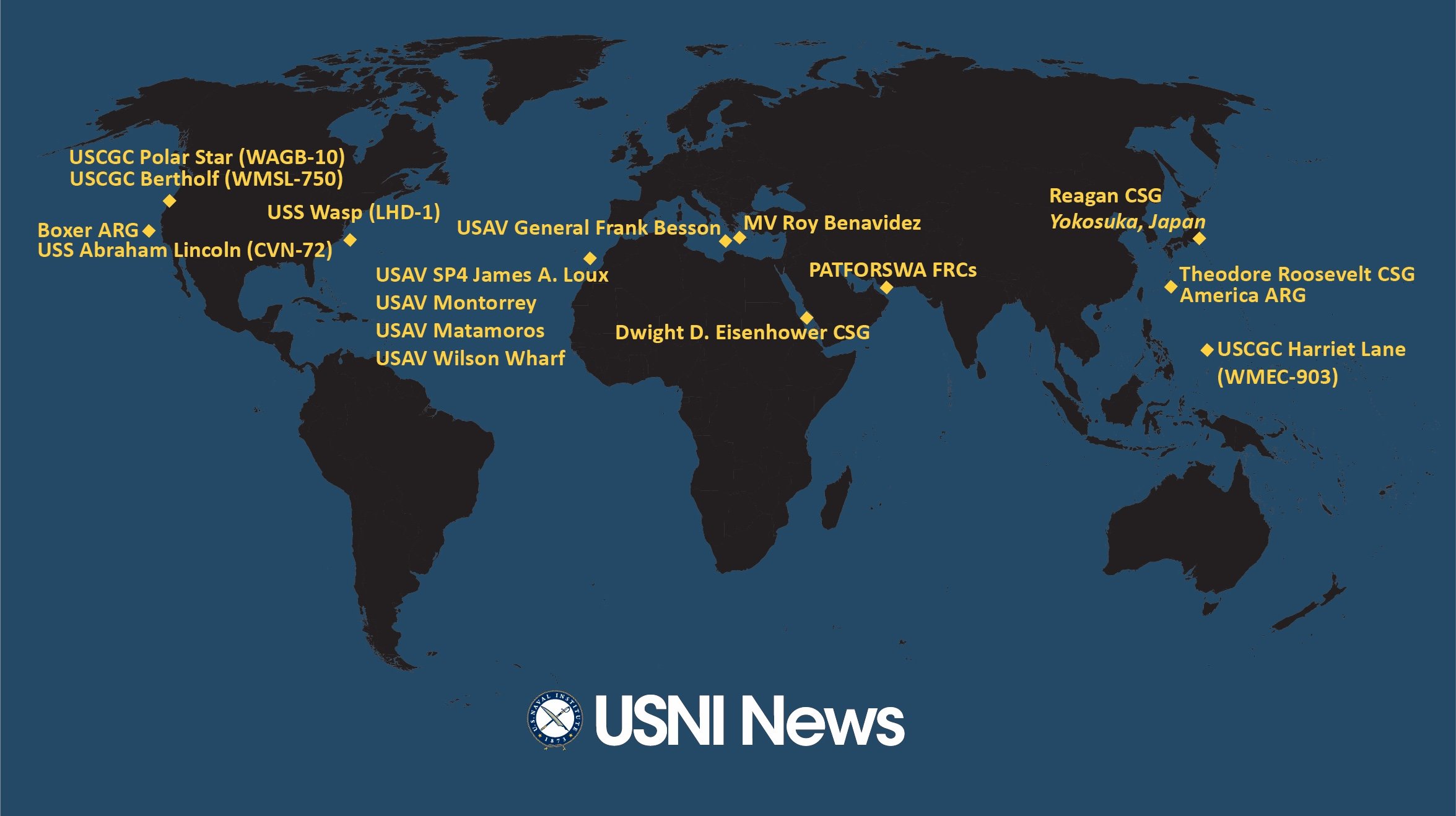
The commandant of the Marine Corps and the chief of naval operations made the case for forward presence in an era of declining defense spending at a Washington to a national security forum think tank last week as events in Egypt threaten to spiral out of control.
Adm. Jonathan Greenert explained how the Navy and the Marine Corps can react quickly to situations citing the movement of USS Kearsarge (LHD-3) and USS San Antonio (LPD-17) into the Red Sea following the Egyptian military’s removal of President Mohamed Morsi from office as an immediate example of forward presence’s value and tailored forces. The ships were sent closer to the conflict, “because we don’t know what’s going to happen” in Egypt. “We can’t garrison and respond. It will be too late,” to handle a possible evacuation of Americans from the country, Greenert said.
Gen. James Amos, appearing with Greenert at the Center for Strategic and International Studies forum, added, “We can re-trench,” meaning slowing down modernization and resetting of equipment and reducing forward presence in places such as the Arabian Sea, “but I would argue that we can’t just do that. The United States of America is a global power and a global leader. We have a responsibility,” to give the president options.
Greenert said, “We are the ‘away team;’ and for a decade, we’ve been away from this,” fighting land wars in Afghanistan and Iraq.
In addition to the movement of the two amphibious war ships close to Egypt, Greenert singled out last year’s Bold Alligator 2012 exercise off the North Carolina Coast and this year’s Dawn Blitz 2013 exercise with Japan, New Zealand and Canada participating, off California as examples of returning to naval operations that are needed to implement the Pacific security strategy.
Yet, these kinds of exercises and ones wanted by combatant commanders are among the most threatened by continuing budget cuts under sequestration.
“Exercise money is becoming very competitive,” Amos said. “The money [regional commander] have comes from us.”
At the same time, to implement the strategy and have strong forward presence costs money when the nation is, “in the midst of a financial crisis.” Amos cited Okinawa as an example of the dilemma.
For the first time in more than a decade, the Marine Corps has three battalions rotating in and out of Okinawa and soon will have a fourth in the mix.
“That costs me $18 million to send a battalion to Okinawa. That’s [operations and maintenance] money,” funds that are most vulnerable to sequestration cuts.
As part of the Pacific strategy, Amos said that countries such as Australia, which recently changed governments, say they want a United States presence, but “they don’t want a large footprint on the ground. As part of an agreement with the Australians, he said that the Marine force in Darwin will grow from 250 to 1,000 over the coming year and possibly to 2,500 in 2015.
Amos said, “I’m not a hand-wringer” in describing today’s security and financial environment; but even with the drawdown in Afghanistan continuing into 2014, he said.
“I don’t think there’s a peace dividend” looming on the horizon as he listed continuing threats from the Middle East to North Korea.
Looking at the fleet in the future, Greenert said vessels, such as the Littoral Combat Ships, Joint High Speed Vessels, Mobile Landing Platforms and the Afloat Forward Staging Base can meet the requirement for more disaggregated operations. They are less costly, have speed, persistence and tailored capabilities for a number of operations.
“Being smart in the platforms” is essential, he said.
Greenert said that he was particularly concerned with the nuclear industrial base as the drawdown continues and new rounds of sequestration take effect.
“What about the subs [smaller contractors]. Eighty percent are single source,” and may not survive when current contracts expire on aircraft carriers and submarines.
Amos said the Marine Corps needs a new amphibious ground vehicle. “I don’t have a choice” with the current vehicles pushing 40 years of service. “It’s a prioritization.”





